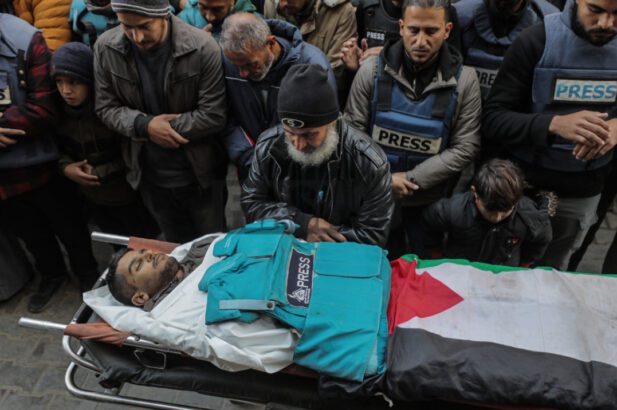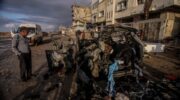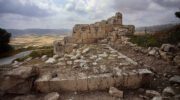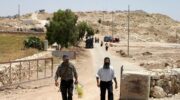Israeli airstrikes have killed or maimed at least five Palestinian journalists who used drones to document Gaza’s destruction since October 7. Survivor testimonies and Israeli military sources reveal that this is no accident.
By Youssr Youssef and Magdalena Hervada, reposted from +972 Magazine, March 27, 2025
In partnership with Forbidden Stories
Faced with the deadliest war for journalists in modern history, Forbidden Stories — whose mission is to continue the work of journalists who are killed on the job — set out to investigate the targeting of the press in Gaza.
In a unique collaboration, it brought together more than 50 journalists from 18 media organizations around the world. Unable to report freely from inside the Strip, consortium members remotely contacted journalists and eyewitnesses; consulted ballistics, weapons, and audio experts; and used satellite images to reveal the deliberate targeting of Gazan reporters and media buildings by the Israeli army.
“The Gaza Project” was launched in June 2024, and +972 co-published two articles at the time with Forbidden Stories. Today, the consortium is publishing another series of articles, including one that +972 is co-publishing below. For the full list of articles comprising “The Gaza Project” and more information about the collaboration, click here.
On Feb. 15, 2024, the UN Relief and Works Agency for Palestine Refugees (UNRWA) published images from Gaza’s Al-Shati refugee camp that were seen around the world. Four months after the start of Israel’s war on the Strip following the Hamas attacks of October 7, for many viewers it was the first time they were able to get a true sense of the scale of the destruction in the north of the enclave: dozens of gutted and partially collapsed buildings, the ruins stretching as far as the horizon.
Abdallah Al-Hajj filmed these images by drone. Nine days after they were posted online, on Feb. 24, the Palestinian journalist was maimed in an Israeli airstrike, which killed his 18-year-old nephew and a fisherman. Al-Hajj, who lost both of his legs in the attack, explained that he had worked for UNRWA for over 10 years and is convinced that he was deliberately targeted by the Israeli army multiple times during the current war.
“Two days after I was targeted, my house was hit,” he said. “Why? To destroy the archives [of images I had] accumulated over 20 years from the entire Gaza Strip. Only a few images [now] remain.”
View this post on Instagram
At the time, Al-Hajj was one of the few journalists left in northern Gaza, after the Israeli army ordered residents to evacuate to the south. Al-Hajj could not abandon his parents, who were too old to make the arduous crossing. Some of the people he came across during his reporting had resorted to eating animal feed. “Every time they saw me with my drone and camera, they asked me to show the world what was happening in Gaza,” he explained in an interview with our partners at Le Monde. So he returned to Al-Shati camp.
On the day he was wounded in the strike, he had used his drone to film only briefly — around “five minutes” — and “not very high, at around 50 meters” above his head, as his images confirm. Moreover, the Israeli army had by then already “wrapped up” a two-week ground operation in the area earlier that day. Yet even absent any evidence of ground troops, Al-Hajj was still attacked.
“If I had been targeted in an area [where there were military operations], they would have said to me, ‘By God, Abdallah, it’s not reasonable to have used your drone [there].’ But here, I was in an area far from everything, near the sea, in an open space,” Al-Hajj said.
In response to a query about the strike, the Israeli army claimed to have “used an Israeli air force plane to eliminate” a “terrorist cell using a drone, posing an imminent threat to forces in the Shati area.” But as Al-Hajj noted, “if I did belong to Hamas, I would never have been able to leave the Gaza Strip to receive medical treatment” (Al-Hajj left Gaza with authorization in April 2024 before receiving treatment in Qatar).
Since October 7, at least five Palestinian journalists who used drones to document Gaza’s destruction have been killed or seriously wounded by deliberate Israeli strikes. The testimonies of their surviving colleagues, corroborated by exchanges with Israeli military sources, demonstrate the absence of clear rules given to soldiers to distinguish between combatants and journalists filming with drones.
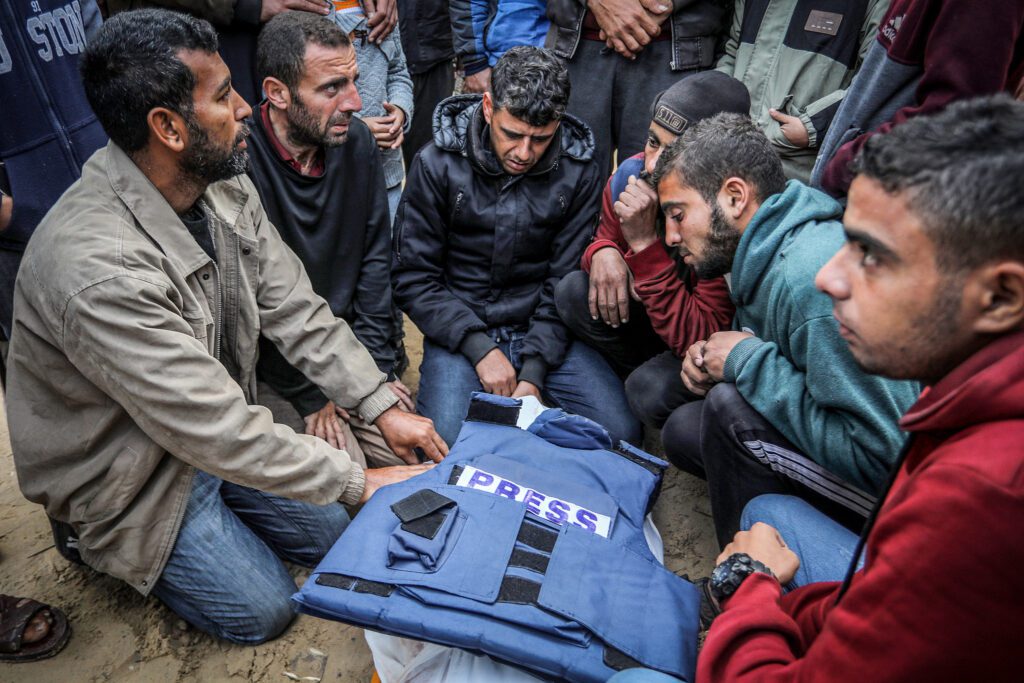
‘I felt under constant threat’
Faced with repeated attacks on the Palestinian press, some journalists, like Soliman Hijjy, decided at the start of the war to stop filming with their drones. One of the first journalists in Gaza to use the technology, Hijjy had tirelessly covered previous Israeli assaults, and his work has won him several international awards. But this time, he decided it was too risky. “The Israeli army targets us without proof and invents pretexts,” he explained. “It’s a way of preventing the story from being transmitted clearly.”
Like Hijjy and Al-Hajj, Shadi Al-Tabatibi had spent countless hours before the war filming Gaza with a drone. Though he once enjoyed “capturing the beauty” of its historical sites, after October 7, he wanted to document the devastation. When he learned of the strike on Al-Hajj, however, everything changed.
“That’s when I said to myself, enough — I’m going to stop filming,” he recounted. This was despite the fact that, as the young journalist pointed out, “filming with drones is essential to show the true extent of the destruction, which images from the ground cannot fully capture.”
The strike on Al-Hajj was far from the first to target the press. Less than two months earlier, on Jan. 7, 2024, Mustafa Thuraya, a freelance journalist working for several media outlets including Al Jazeera and AFP, set off to film what would be his last report. “That day, Mustafa asked me to go with him,” Al-Tabatibi explained, “but I couldn’t because my wife [and I] had to take our baby daughter, born during the war, to be vaccinated.” In missing the reporting trip, Al-Tabatibi escaped death for the first time.
Thuraya was killed alongside journalist Hamza Al-Dahdouh, when the Israeli military targeted their car near Khan Younis, in southern Gaza. The day after the attack, the Israeli army announced that it had “identified and struck a terrorist using a [drone] that posed an immediate threat to Israeli soldiers,” and published what it claimed was evidence linking Thuraya to Hamas, and his colleague to Palestinian Islamic Jihad.
But according to a Washington Post investigation, satellite images of the area and an analysis of the footage filmed by Thuraya — who had previously worked for about five years as a photographer for the Religious Affairs Ministry in Gaza — identified no Israeli military presence or anything that might have made the journalists a threat to the army.
In the wake of the attacks on Thuraya and Al-Hajj, it became difficult for Palestinian journalists in Gaza to continue filming with drones. The head of security for a major international media outlet explained that in January 2024, the company decided to reduce the use of drones — before they stopped using them altogether in April. “I remember the moment when we said to ourselves, now we’re stopping,” he said. “It was a period so full of bad news that it became impossible to continue.”
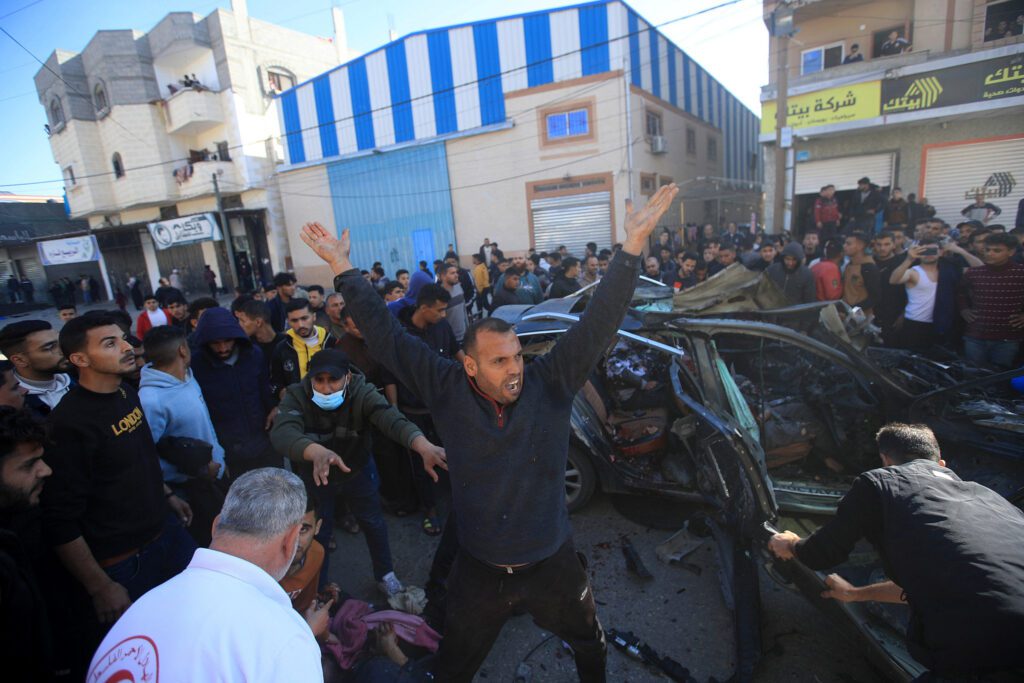
But the strikes continued, and Al-Tabatibi would lose more of his colleagues. He recalled discussing the risks of flying drones with his friends Ayman and Ibrahim Al-Gharbawi. The two brothers, aged 23 and 32, had seen their photo studio, the fruit of “11 years of hard work,” destroyed by the bombardments. Despite this, they were not discouraged.
“Ibrahim told me he’d just bought a drone and wanted to start using it, and asked me to come and help him fly it,” said Al-Tabatibi. “I replied, ‘This really isn’t the right time. The situation is frightening.’”
Ibrahim and Ayman barely had time to try their hand at using the drone. On April 26, 2024, they were killed by an airstrike, either during or just after their filming, according to eyewitness accounts (they were not wearing press vests).
In May 2024, shortly before Israel occupied and sealed the Rafah Crossing, Al-Tabatibi finally set off for Cairo, leaving behind the ghosts of his friends in Gaza, as well as his two drones. He gave one of them to his friend and colleague Mohammed Abu Saada, killed three months later alongside three of his cousins when Israel bombed his uncle’s house. According to the Committee to Protect Journalists (CPJ), shortly before his death, Abu Saada had confided to his mother that the Israeli army was “deliberately killing anyone who owned a drone and used it for filming.”
Al-Tabatibi himself shared this fear. “I was afraid of being targeted in my own home, with my wife and children. I felt under constant threat.”
‘If we saw a drone, we would shoot the person using it, no questions asked’
Israeli soldier Michael Ofer-Ziv didn’t know the Al-Gharbawi brothers, Thuraya, Abu Saada, or any of the other drone-operating journalists killed in Gaza. For the first two months of the war, he was stationed in the Israeli military base of Sde Teiman, tasked with verifying that the Israeli army was not firing on its own soldiers. “At no point during this war did I receive an official document listing the rules of engagement,” he explained. “And this is a problem, because it leaves a lot of space for interpretation.”
With regard to drones, Ofer-Ziv said “the general vibe” in the war room was clear. “If we saw anyone piloting a drone, and that drone is not ours, the idea was to shoot the drone and the person using it, no questions asked,” he said. As for whether this applied to journalists, Ofer-Ziv said, “we didn’t talk about that.” In June 2024, after a period of reflection, Ofer-Ziv officially refused to return to service.
In response to a query about the rules of engagement given to its soldiers, a spokesperson for the Israeli army said it referred to the law of armed conflict — which requires that it distinguish between enemy combatants and journalists — and refused to “comment on operational directives, as these are classified.” But several high-ranking Israeli military officers affirmed the lack of clear rules when it came to distinguishing between combatants and journalists operating drones.

Lt. Col. (res.) Maurice Hirsch, who served for 19 years in the Israeli army’s legal corps, told our partners at Paper Trail Media that if a soldier spots a drone in a combat zone close to fighting forces, “I certainly wouldn’t presume any wrongdoing if that drone and its operators had been targeted … It wouldn’t be unreasonable to assume they were part of an enemy force.” Neither Thuraya nor Al-Hajj was in a combat zone, and both were targeted after filming.
Indeed, as far back as 2018, Israeli officials have admitted that the army may target anyone in Gaza that operates drones near Israeli armed forces, regardless of whether they are identified as a combatant or pose a threat to Israeli soldiers. After Palestinian journalist Yasser Murtaja was killed while using a drone to cover the Great March of Return, for instance, then-Defense Minister Avigdor Liberman told the press, “I don’t know who is or isn’t a photographer. Anyone who operates drones above IDF soldiers needs to understand he’s putting himself in danger.”
After the slew of killings, Al-Tabatibi was left with only one close friend in Gaza who owned a drone. In early March, during the ceasefire, Forbidden Stories asked Mahmoud Samir Isleem Al-Basos to film Gaza — both to continue the work of drone journalists killed or wounded during the war, and to enable readers to visualize the unprecedented scale of destruction.
Yet despite the ceasefire, on March 15, Al-Basos was killed while on assignment for the Al-Khair charitable foundation in the north of Gaza. According to his cousin, who spoke to the CPJ, Al-Basos was wearing his press vest and helmet. That morning, two Israeli airstrikes hit Beit Lahia, killing at least six other people. Among them were aid workers and cameramen dispatched by Al-Khair. The NGO explained that it was using a drone to film the preparation of a Ramadan meal and the future extension of a refugee camp.
The Israeli army claimed that these strikes were aimed at “terrorists” — two of whom were operating a drone — and issued an error-filled list of names and photos of the people it alleged were killed in the attack. Al-Basos is neither mentioned nor pictured in the list of “terrorists,” but it does include a name that resembles his, belonging to an individual described by the Israeli army as “a Hamas terrorist operating under journalistic cover.” Based on our research, the individual named by the army has no direct link with Al-Basos and was not killed in the strike.
According to journalists who knew him, employees of the Al-Khair Foundation, and a Hamas representative interviewed for this story, Al-Basos had no affiliation with Hamas or Palestinian Islamic Jihad. Bellingcat has also geolocated the two strikes in Beit Lahia — the first around two kilometers from an Israeli army post near the fence encircling Gaza, and the second around three kilometers away — undermining any claim that the presence of a drone would represent a threat to the army.
In response to multiple requests to provide evidence in support of its accusations, a spokesperson for the Israeli army stated that they would “not elaborate on the published statements,” and “categorically reject[ed] the allegation of a systemic attack on journalists.”
“Israel has repeatedly made similar unproven claims without producing any credible evidence,” explained Doja Daoud from the CPJ. “We know that this practice endangers journalists and erodes public trust in Palestinian journalists reporting from Gaza.” The CPJ has just added Al-Basos to its list of journalists killed by the Israeli army, and refers to his case as “murder.”
Additional reporting was contributed by Mariana Abreu (Forbidden Stories), Hoda Osman and Zarifa Abou Qoura (ARIJ), Jake Godin and Charlotte Maher (Bellingcat), Thomas Bordeaux (volunteer with Bellingcat’s Global Authentication Program), and Maria Retter (Paper Trail Media).
Youssr Youssef is an investigative journalist at Forbidden Stories. Before joining the organization, she worked as a data journalist for the French national newspaper, Le Figaro. She also directed the documentary, “René Carmille, a Hacker Under the Occupation,” which provides a historical perspective on the misuse of personal data and received awards at several festivals.
Magdalena Hervada is a French and Spanish investigative journalist at Forbidden Stories.
+972 Magazine is well positioned to cover this perilous time – but we need your help to do it. Can we count on your support?
RELATED ARTICLES:
- ‘Everything Is Being Crushed’: Journalist Hossam Shabat’s Last Story Before He Was Killed by Israel
- Anne Applebaum of the Atlantic Magazine & Columbia’s Pulitzer Board advocated killing Palestinian journalists
- Israel’s war on Gaza is the deadliest conflict on record for journalists
- Drone footage raises questions about Israeli justification for deadly strike on Gaza journalists
- Mondoweiss: NYT, Reuters, Economist journalists self-censor on Israel so as not to be ‘savagely targeted’ — John Lyons
- Israel aims to kill a Palestinian football ‘revolution’ — along with its players
- From USS Liberty to Rachel Corrie: Israel’s Attacks on U.S. You Probably Didn’t Know About

